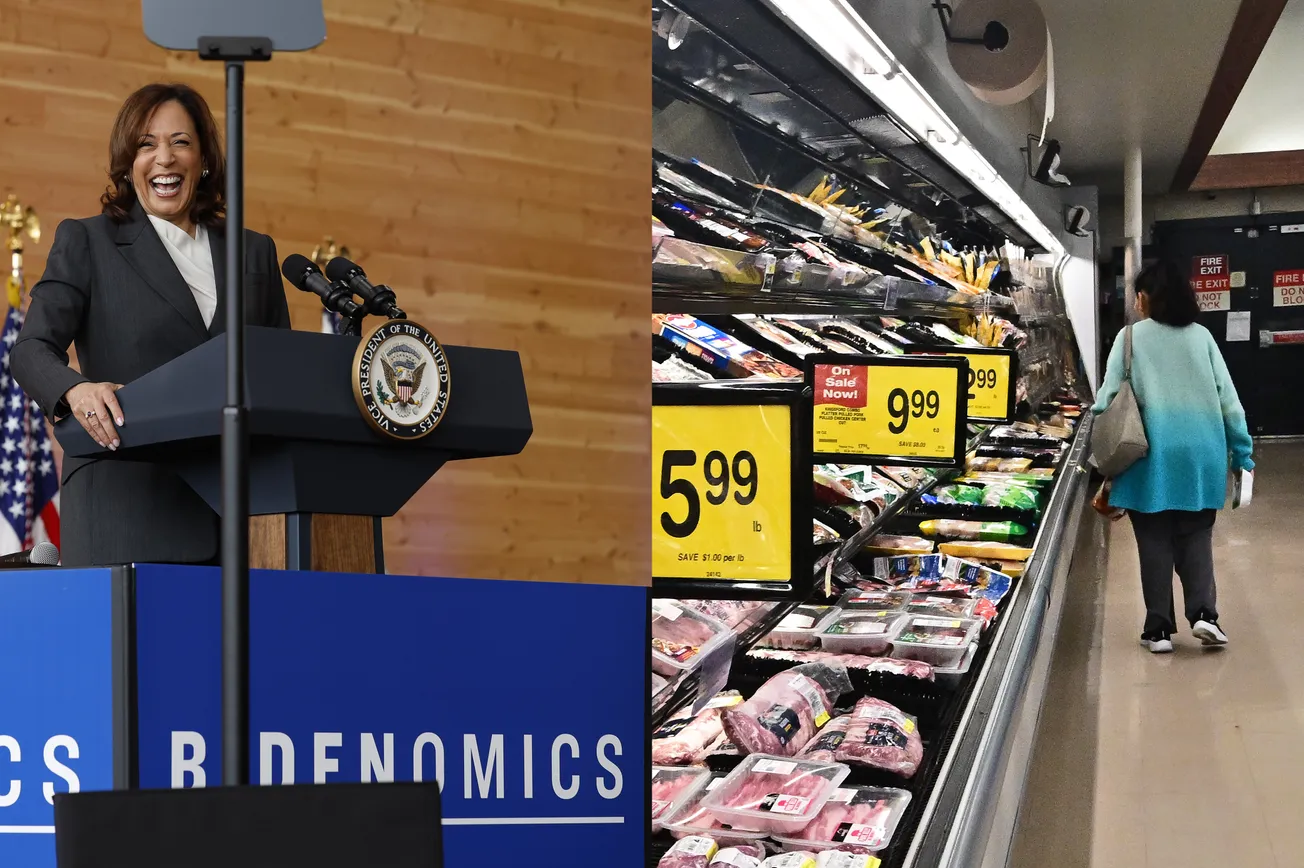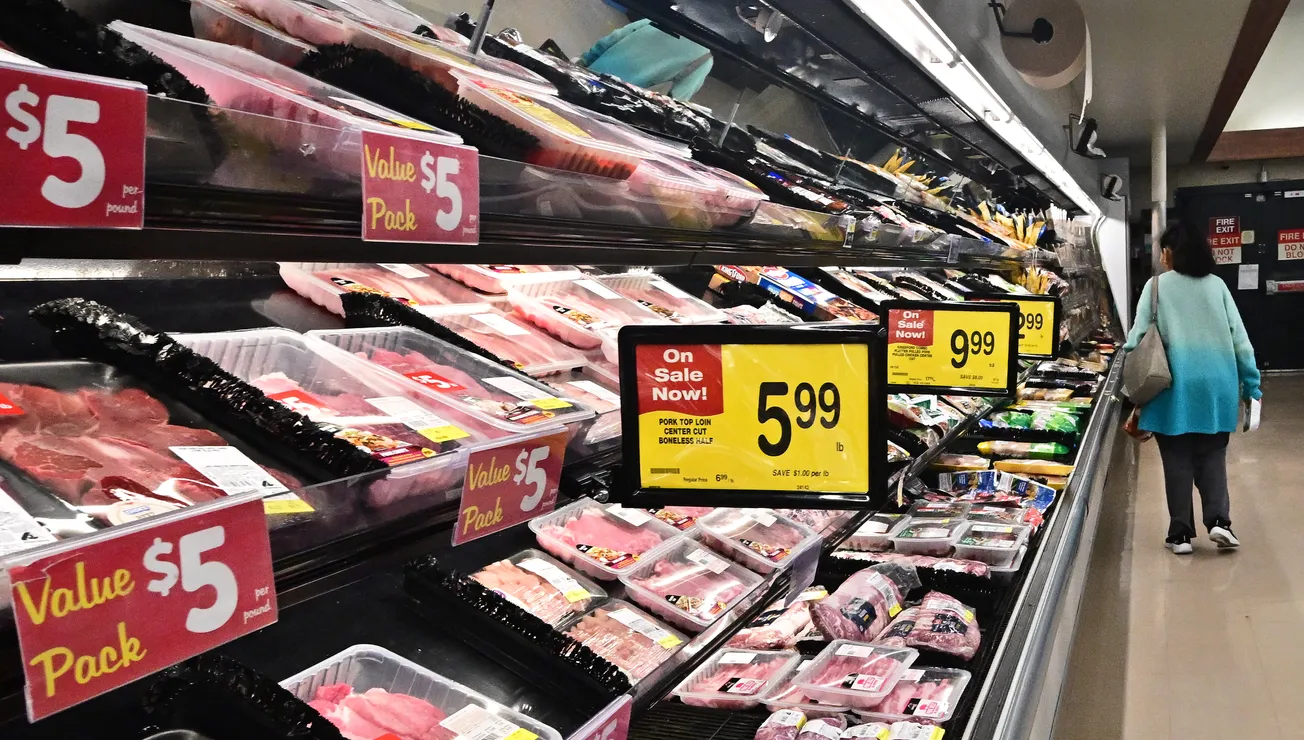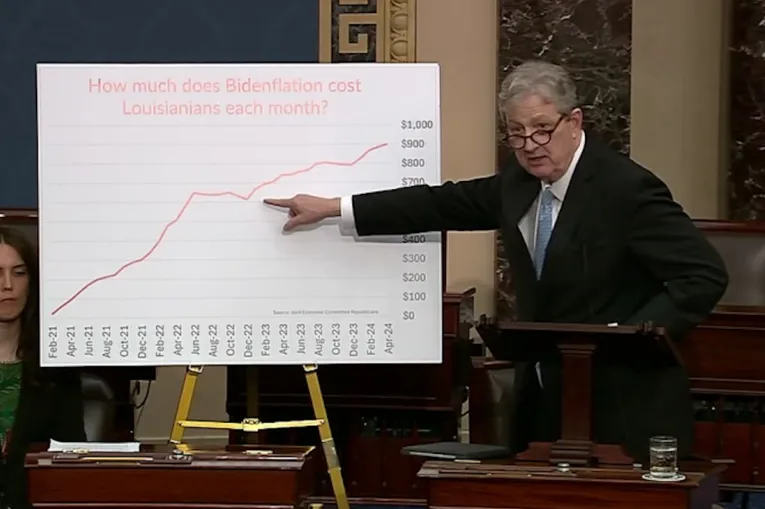- Bidenflation at 16.7% erodes Americans’ purchasing power
- Annualized Bidenflation hits 5.9%, nearly double the CPI
- Core prices stubborn at 4.0%
- Real wages lag
The dark reality of Bidenomics is 16.7% inflation under President Biden’s watch. When he took office, inflation was at just 1.4%. Inflation has stayed above the Federal Reserve's 2% target for 34 consecutive months since March 2021.
According to the Labor Department, average hourly earnings for all employees dropped 3.1% to $11.07 in November from $11.42 in January 2021 when Biden assumed office. Despite nominal salary increases at their fastest pace in years, American workers are now worse off than when Biden took office.
In short, the prices have increased by 16.7% under Biden’s watch, while real wages have declined by 3.1%, meaning Americans have taken a 3.1% pay cut under Biden’s watch. To put it differently, they now need 19.8% more income than they had in January 2021 to maintain their standard of living.
Inflation acts as a tax on Americans. Due to entrenched inflation without corresponding real wage growth, most Americans (60%) live paycheck to paycheck, cutting expenses to make ends meet. Further, as we showed recently, the fight to slay inflation comes with side effects worse than the disease.
Therefore, it is no surprise that inflation and food prices emerged as Americans' top economic issues in a recent TIPP Poll.
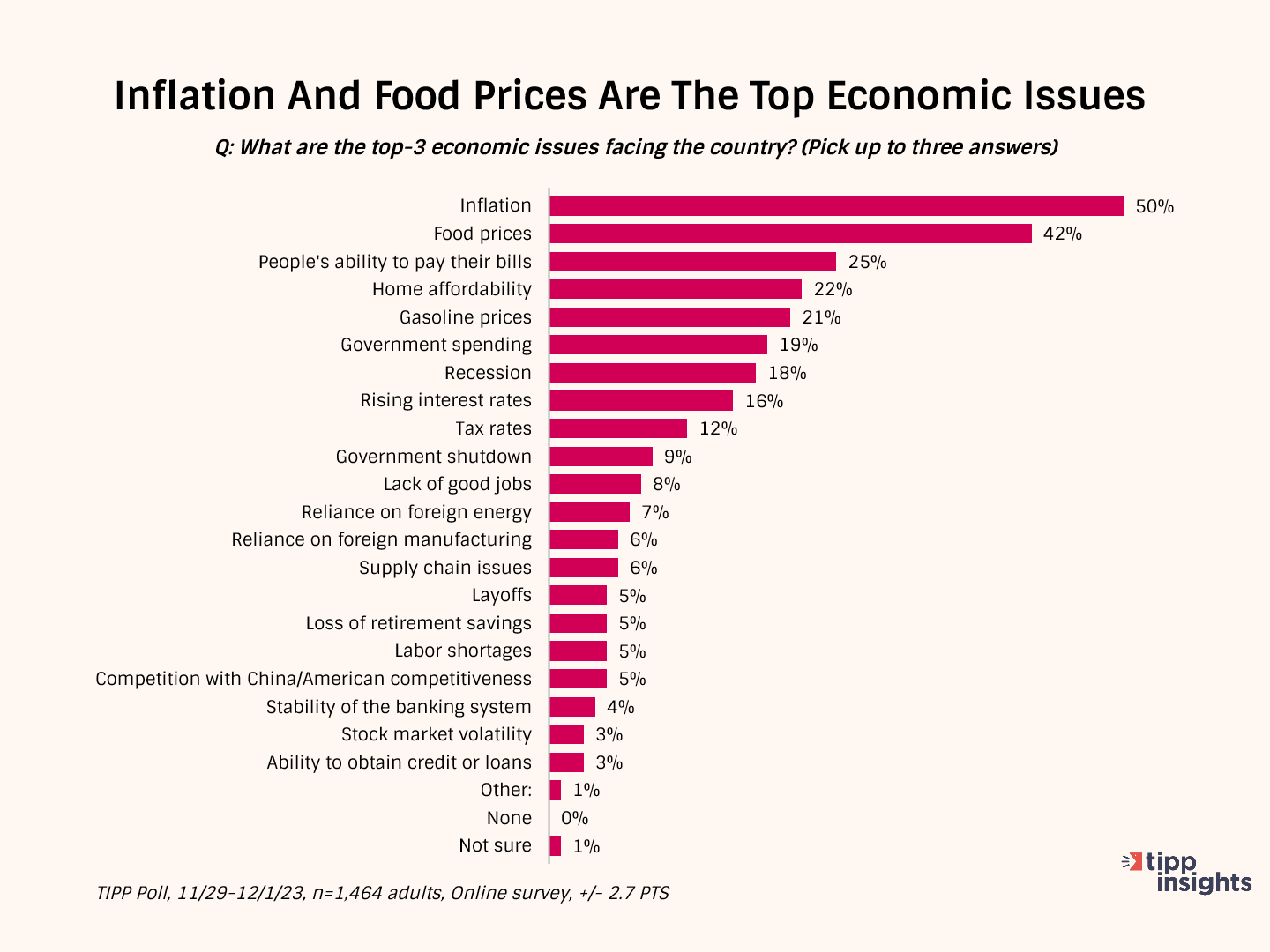
CPI Report
The Consumer Price Index (CPI) released by the government on Tuesday showed a 3.1% year-over-year price increase from November 2022 to November 2023.
The CPI rate had declined steadily from a 40-year high of 9.1% in June 2022 to 3.0% in June 2023 for 12 consecutive months. In July, it broke that run and increased to 3.2%, and further increased for the second month in August to 3.7% and remained at 3.7% in September. In October, it returned to 3.2%, and in November dropped again slightly to 3.1%.
After adjusting for seasonality, the CPI increased by 0.1% between October 2023 and November 2023. In the same period, Food prices rose by 0.2%, Energy prices declined by 2.3%, and All items except food and energy (Core) increased by 0.3%
TIPP CPI
We developed the TIPP CPI, a metric that uses February 2021, the month after President Biden's inauguration, as its base. All TIPP CPI measures are anchored to the base month of February 2021, making it exclusive to the economy under President Biden's watch.
We use the relevant data from the Bureau of Labor Statistics (BLS) to calculate the TIPP CPI, but we adjust the period to Biden's tenure. CPIs are like index numbers that show how prices affect people's lives, similar to how the Dow Jones Industrial Average reflects the stock market.
When discussing the TIPP CPI and the BLS CPI, we convert the index numbers into percentage changes to better understand and compare them.
Bidenflation, measured by the TIPP CPI using the same underlying data, stayed steady at 16.7% in November. It was 17.0% in October and September and 16.7% in August.
By the middle of 2022, significant inflation had already taken hold. In November 2022, CPI inflation stood at 7.1 percent. The official BLS CPI year-over-year increases will compare prices to already inflated bases in the coming months, so these statistics might mask the full impact.
TIPP CPI vs. BLS CPI
The following four charts present details about the new metric.
The annual CPI increase reported by BLS is 3.1% for November 2023. Compare this to the TIPP CPI of 16.7%, a 13.6-point difference. Prices have increased by 16.7% since President Biden took office. On an annualized basis, TIPP CPI is 5.9%.
Food prices increased by 19.8% under Biden compared to only 2.9% as per BLS CPI, a difference of 16.9 points.
TIPP CPI data show that Energy prices increased by 29.9%. But, according to the BLS CPI, energy prices improved by 5.4%. The difference between the two is a whopping 35.3 points.
The Core CPI is the price increase for all items, excluding food and energy. The Core TIPP CPI is 15.1% compared to 4.0% BLS CPI in the year-over-year measure, an 11.1-point difference.
Further, gasoline prices have increased by 34.2% since President Biden took office, whereas the BLS CPI shows that gasoline prices have improved by 8.9%, a difference of 43.1 points.
TIPP CPI finds that Used car prices have risen by 24.0% during President Biden's term. Meanwhile, the BLS CPI reports that the prices have dropped 3.8%, a difference of 27.7 points.
Inflation for air tickets under President Biden is 30.4% compared to the BLS CPI’s finding of an improvement of 12.1%, a difference of 42.5 points.
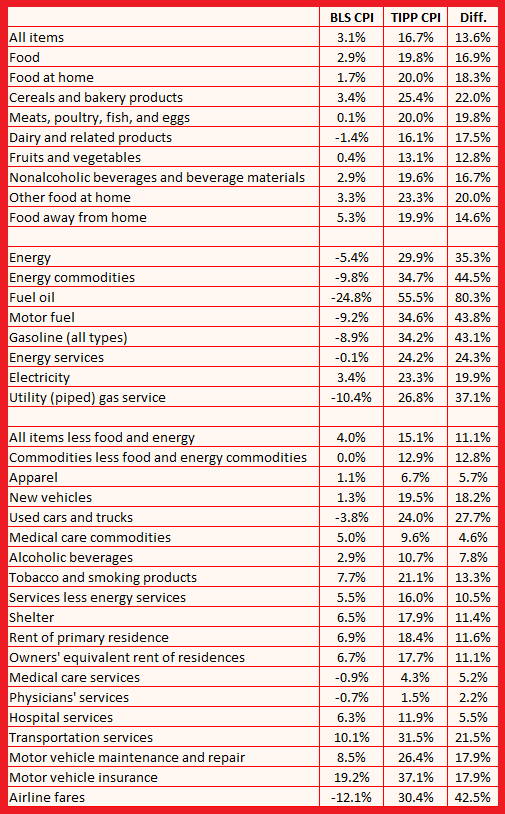
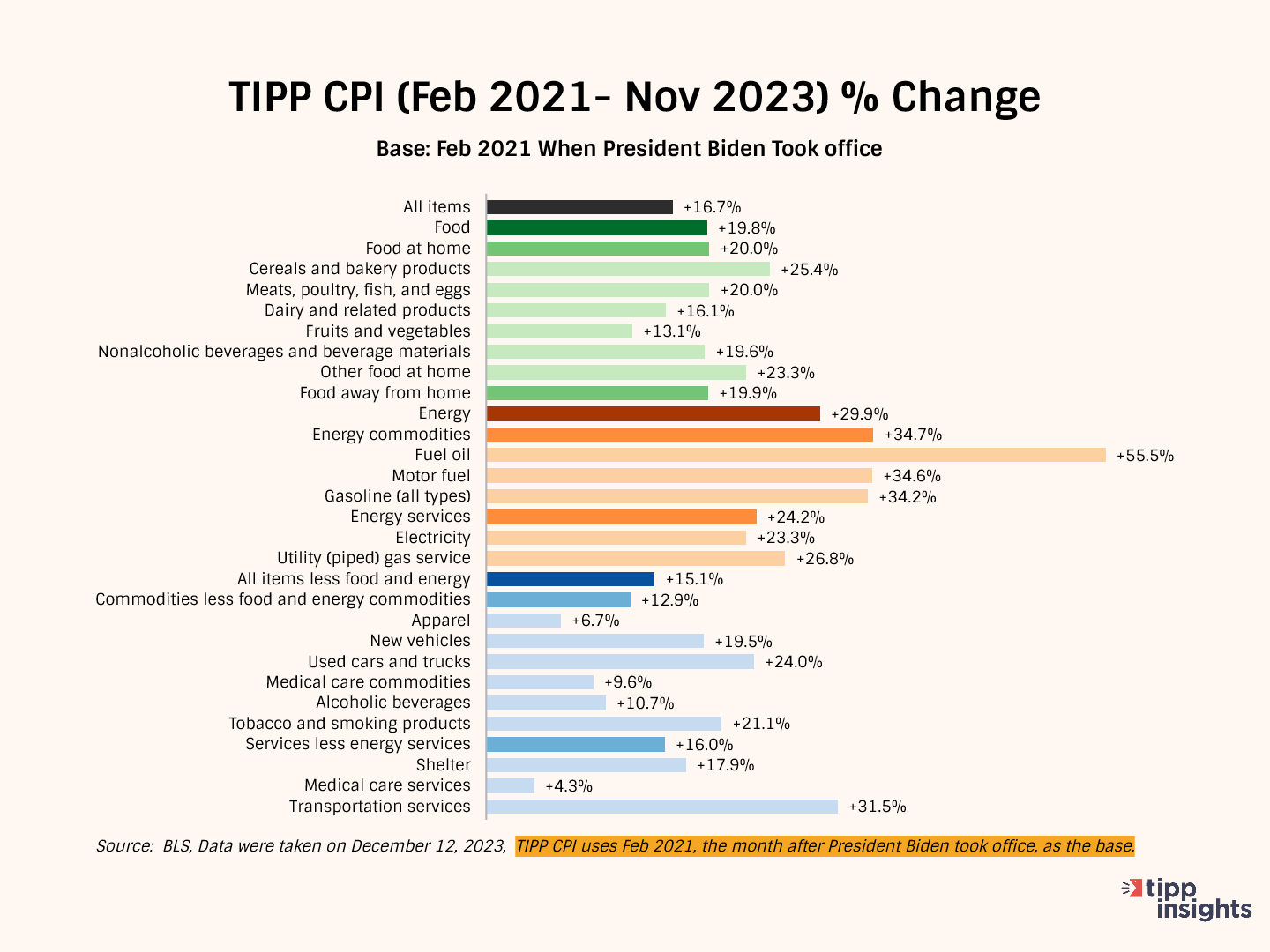
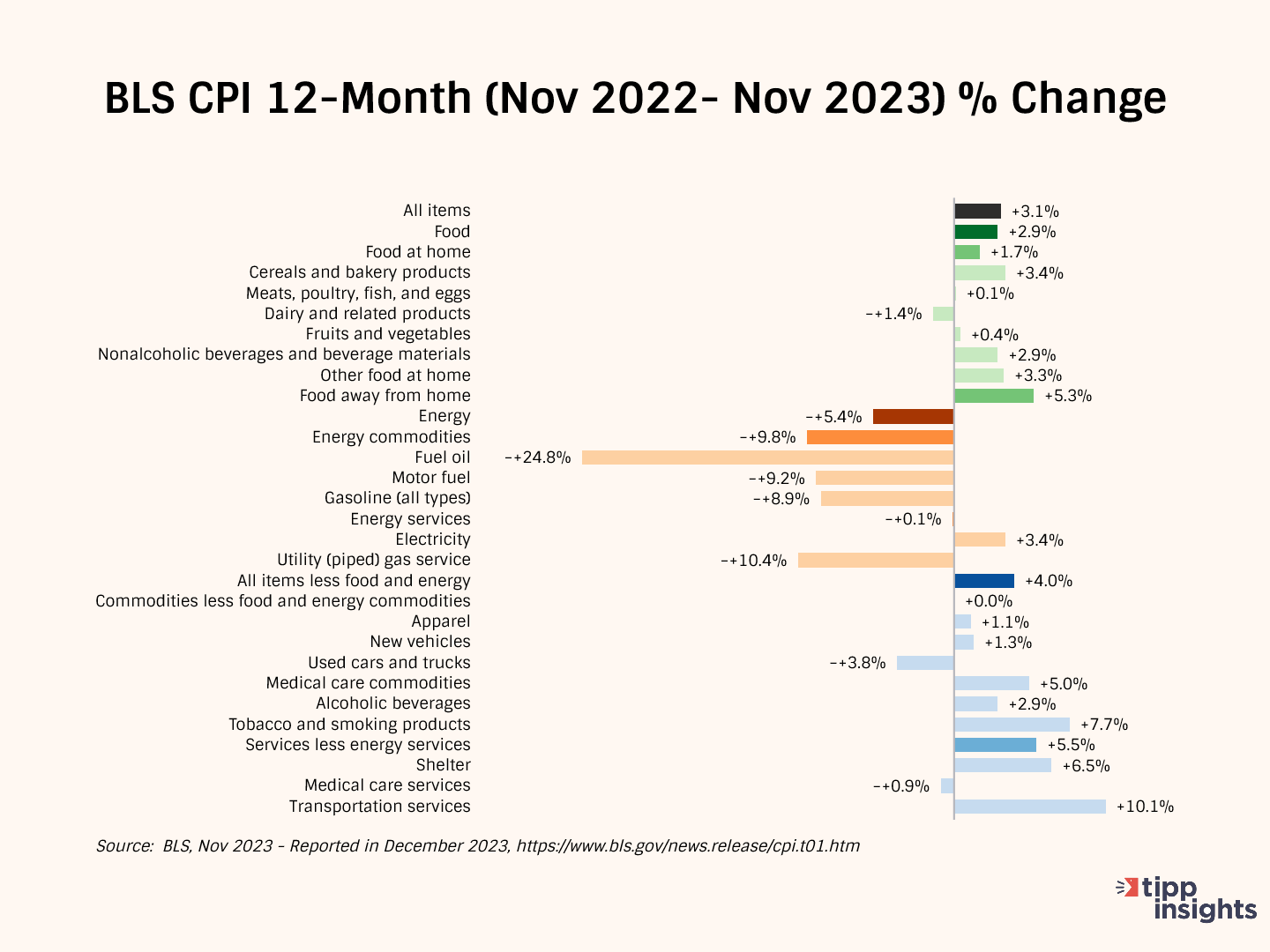
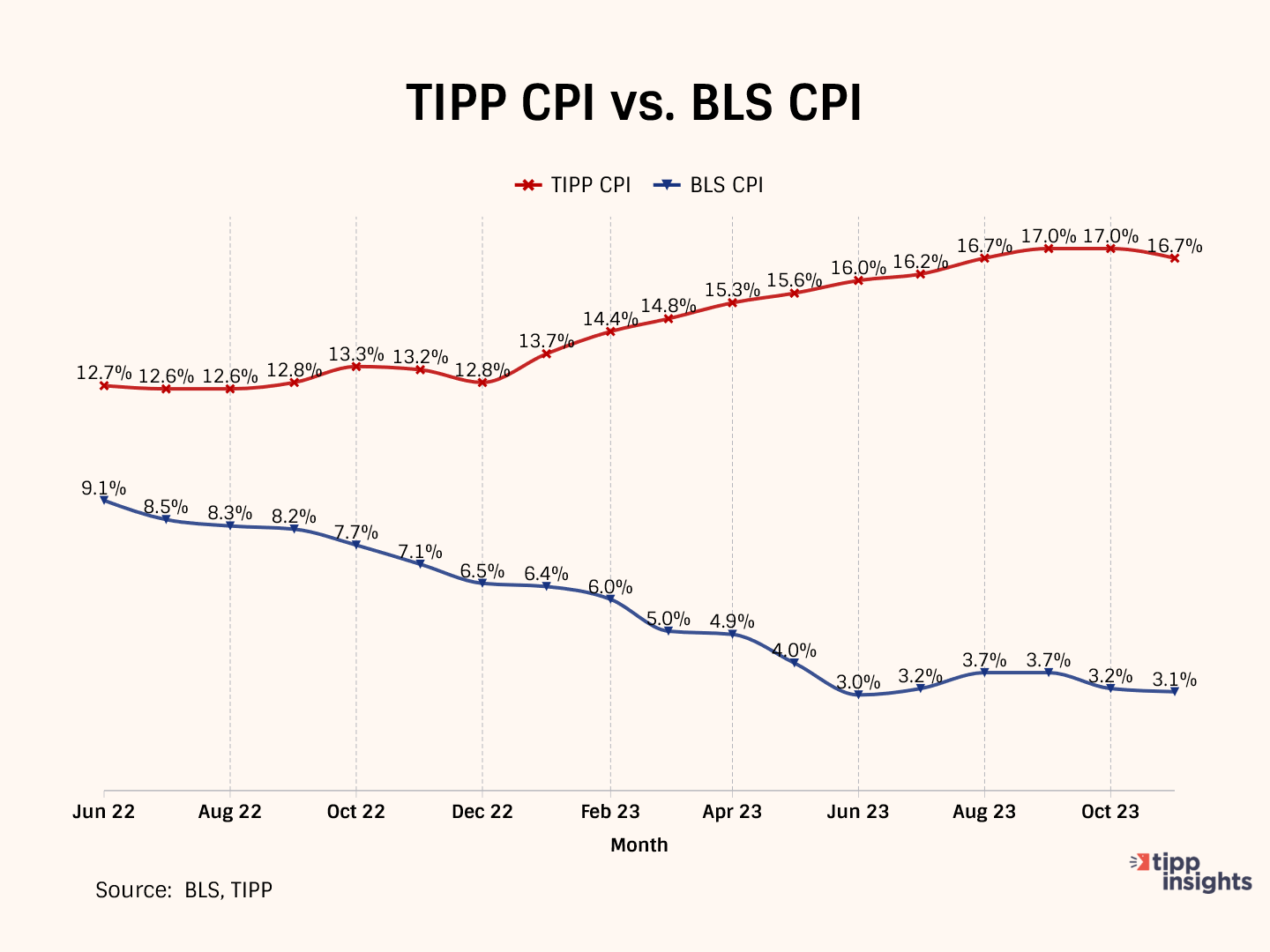
The latest TIPP Poll, completed earlier this month, shows nine in ten (85%) survey respondents are concerned about inflation. Since January 2022, inflation concerns have stayed above 85%. The "very concerned" share has been over 50% for twenty-two months.
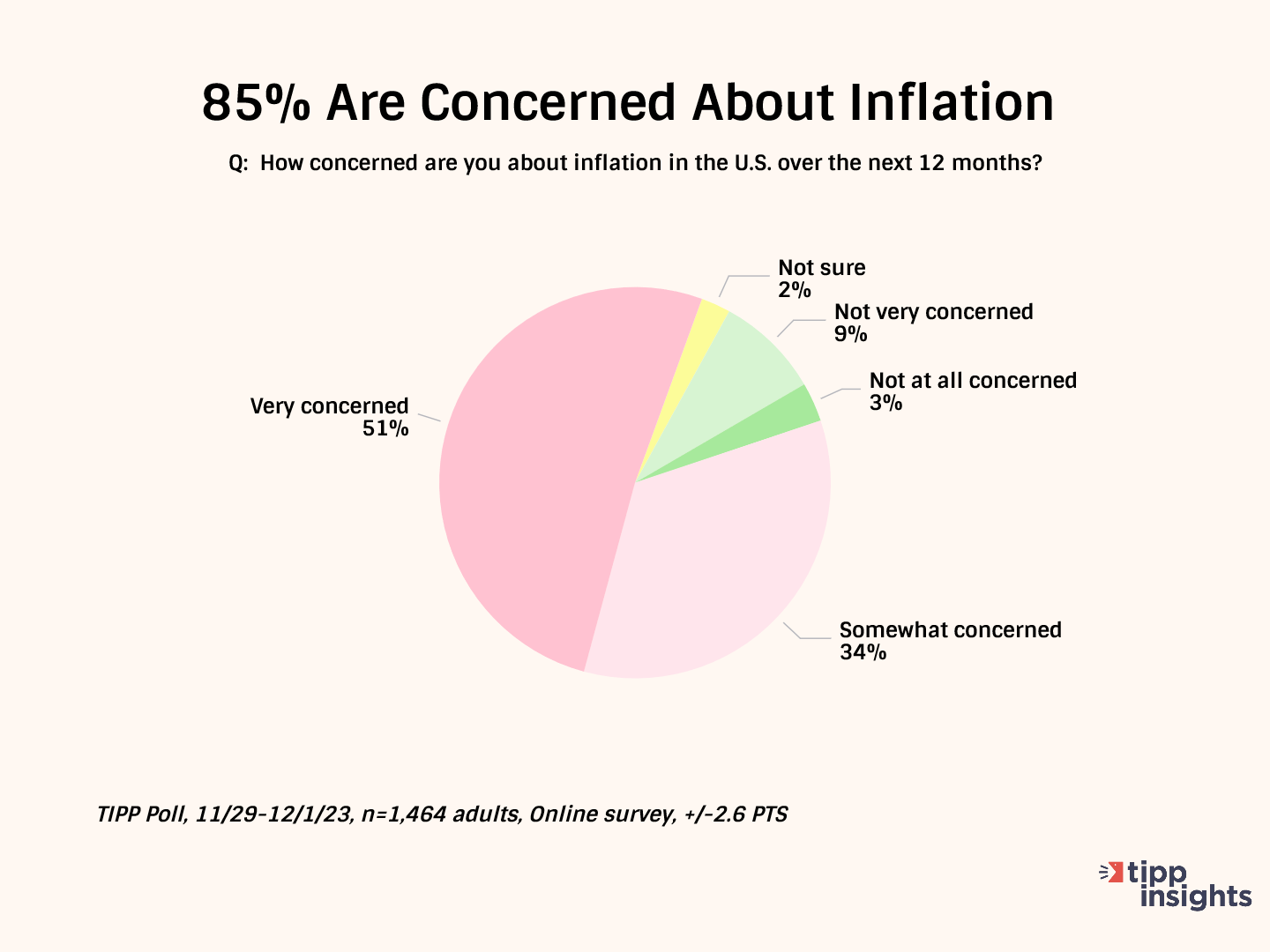
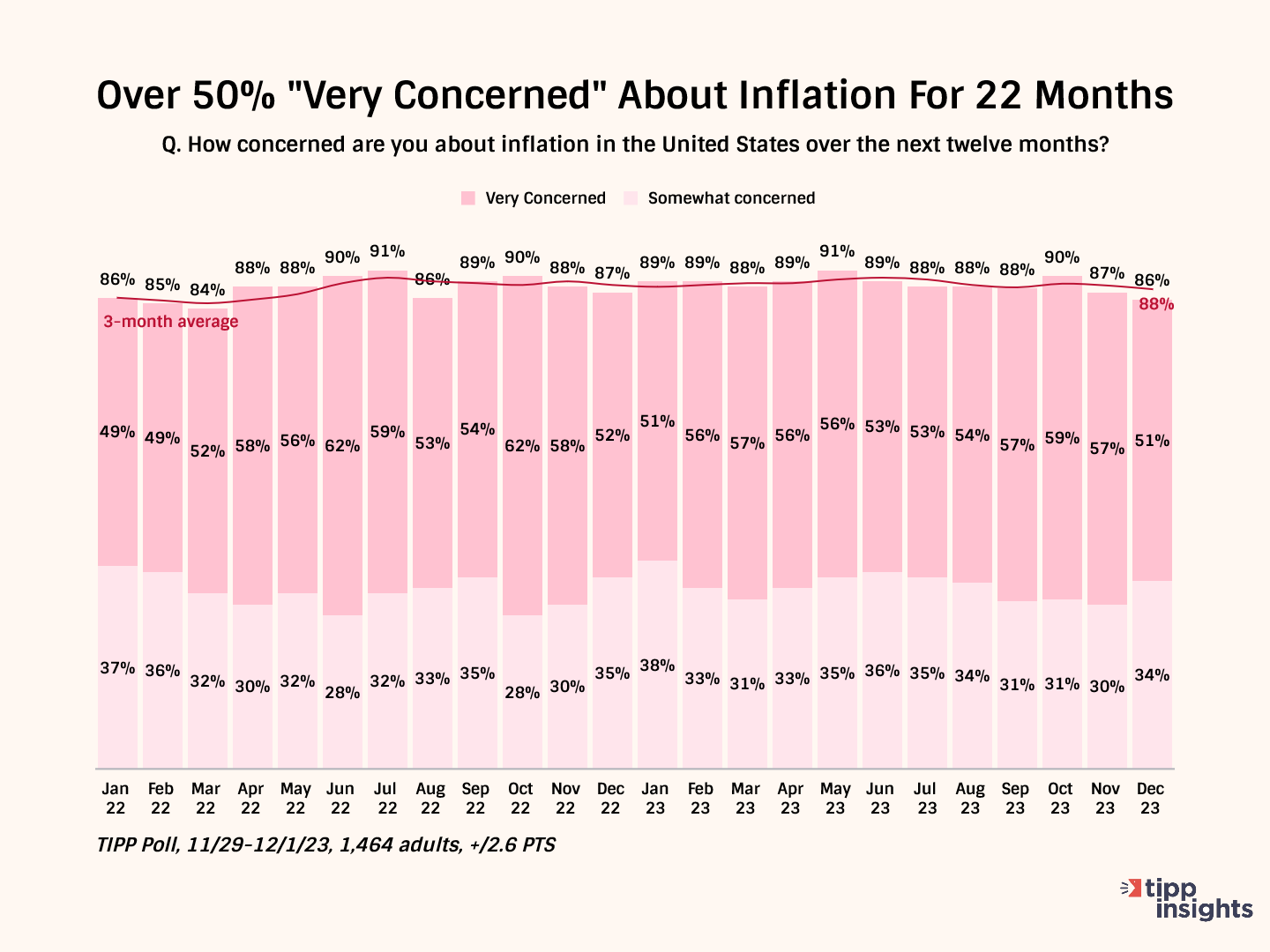
Nearly six in ten (59%) say their wages have not kept up with inflation. Only 18% say their income has kept pace with inflation.
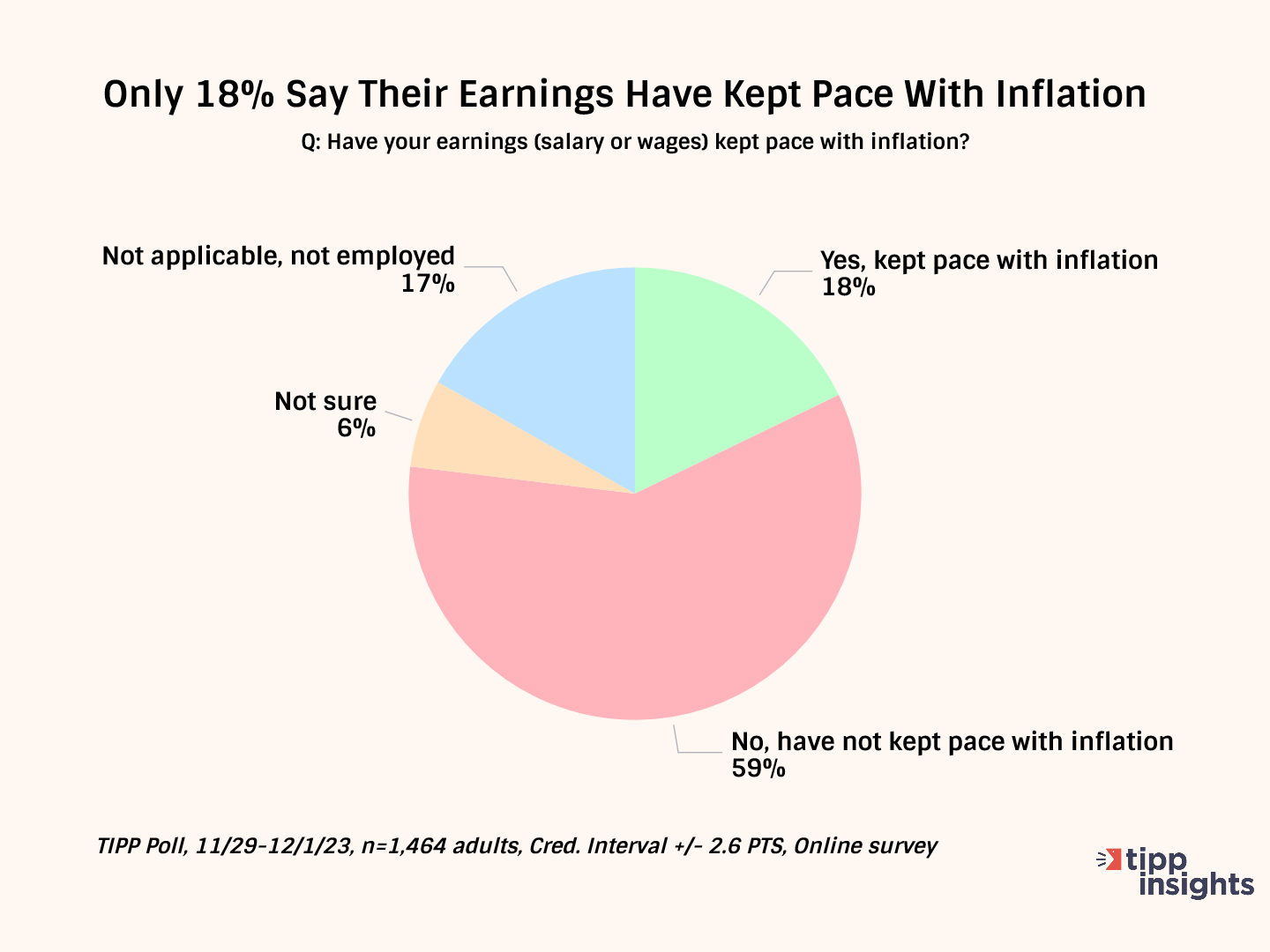
This statistic hovered in the low twenties for most of the last year. The positive change between January and March has petered out since May. Notice the steady descent from March 2023. It dropped to 18% in December, with a three-month average of 19.3%.
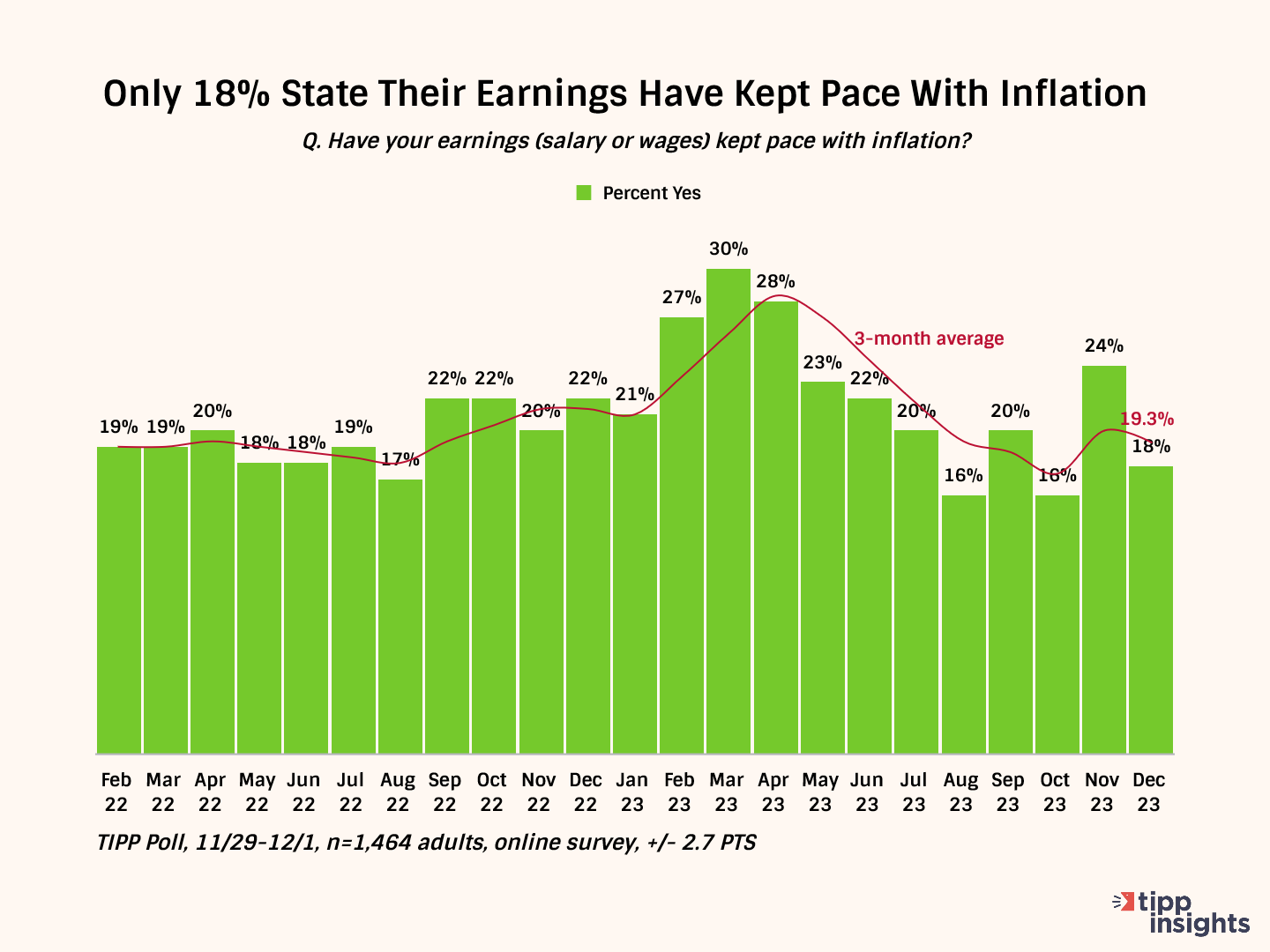
Nominal wages represent the amount of money one earns without considering changes in the cost of living. On the other hand, real wages consider inflation and measure the purchasing power of wages. Real wages provide a more accurate reflection of what is affordable with the income earned by factoring in the changes in the cost of living.
Real weekly wages measured year-over-year dropped for 26 of the 34 months of the Biden presidency from Feb 2021 to November 2023. It broke the 26-month negative run in June and has recorded positive readings for six months. However, it is only 0.53% in November.
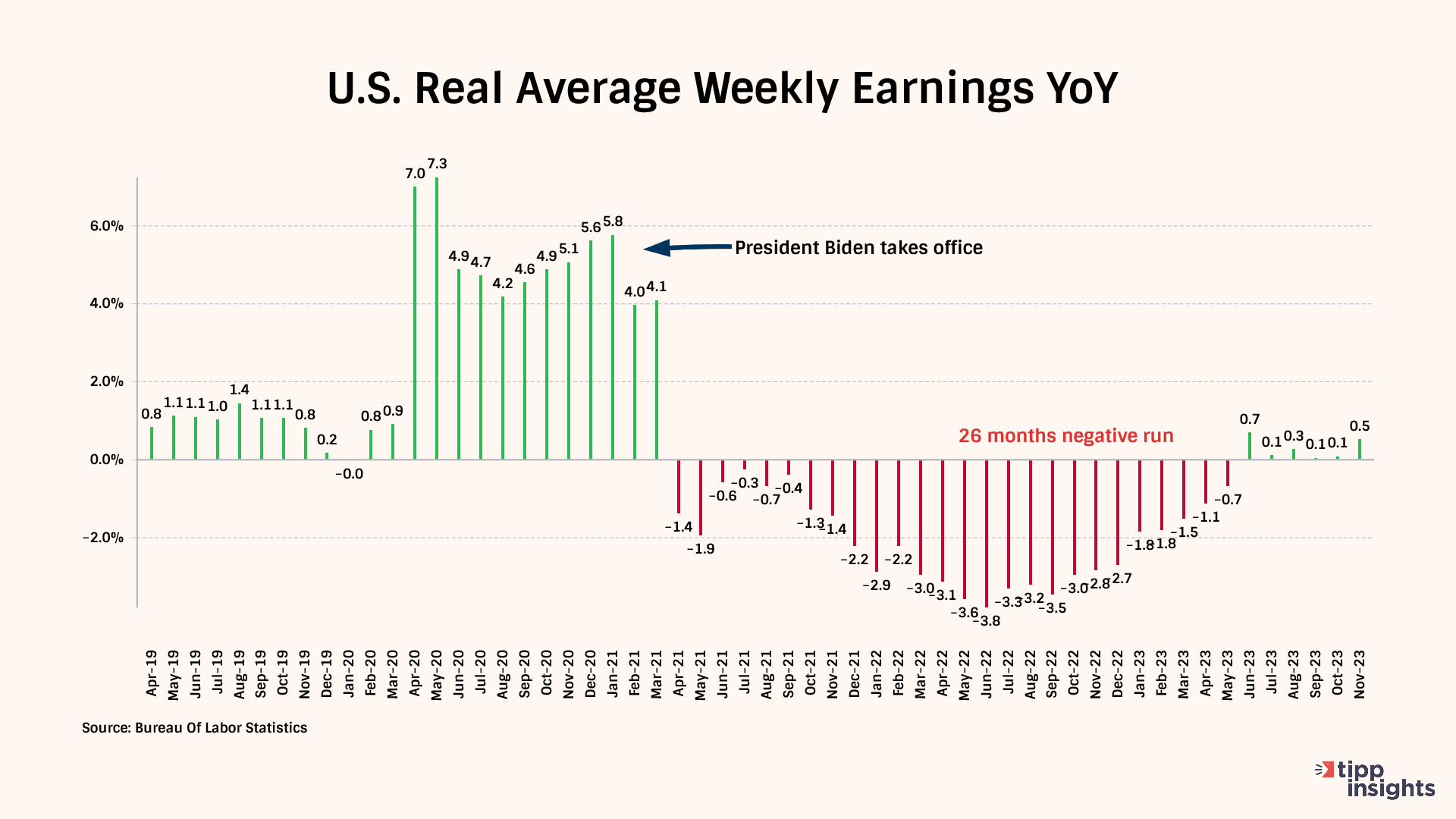
As a result of inflation, Americans are cutting back on household spending.
They are cutting back on entertainment (82%), eating out (81%), purchasing big-ticket items (79%), holiday/vacation travel (76%), and memberships/subscriptions (72%).
Two-thirds (67%) are cutting back on even good causes such as charity giving. Over one-half (58%) of households spend less on groceries. The high gasoline prices forced 58% to cut back on local driving.
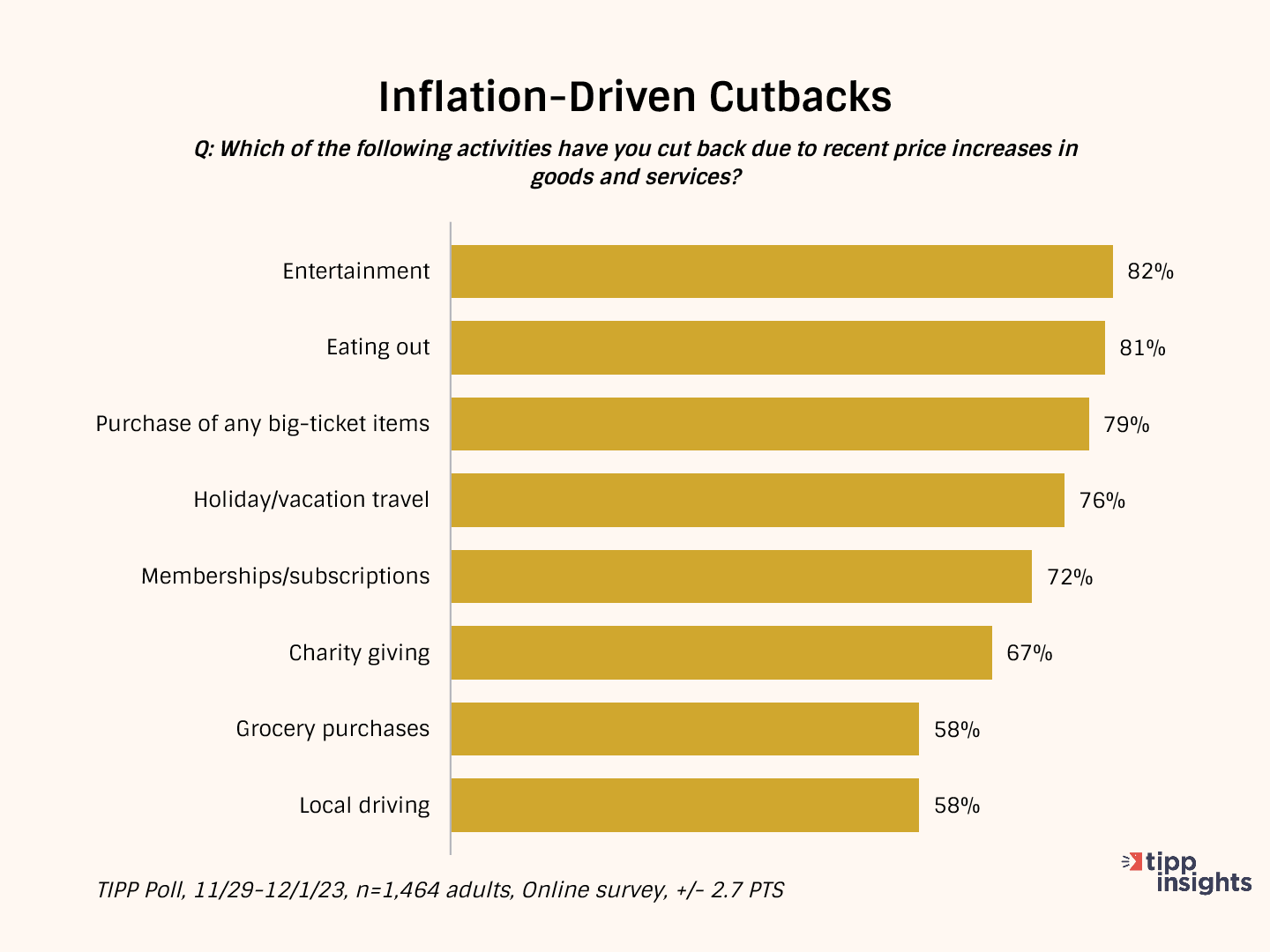
While Americans look forward to Christmas festivities, nearly two-thirds (63%) are concerned about Christmas expenses.
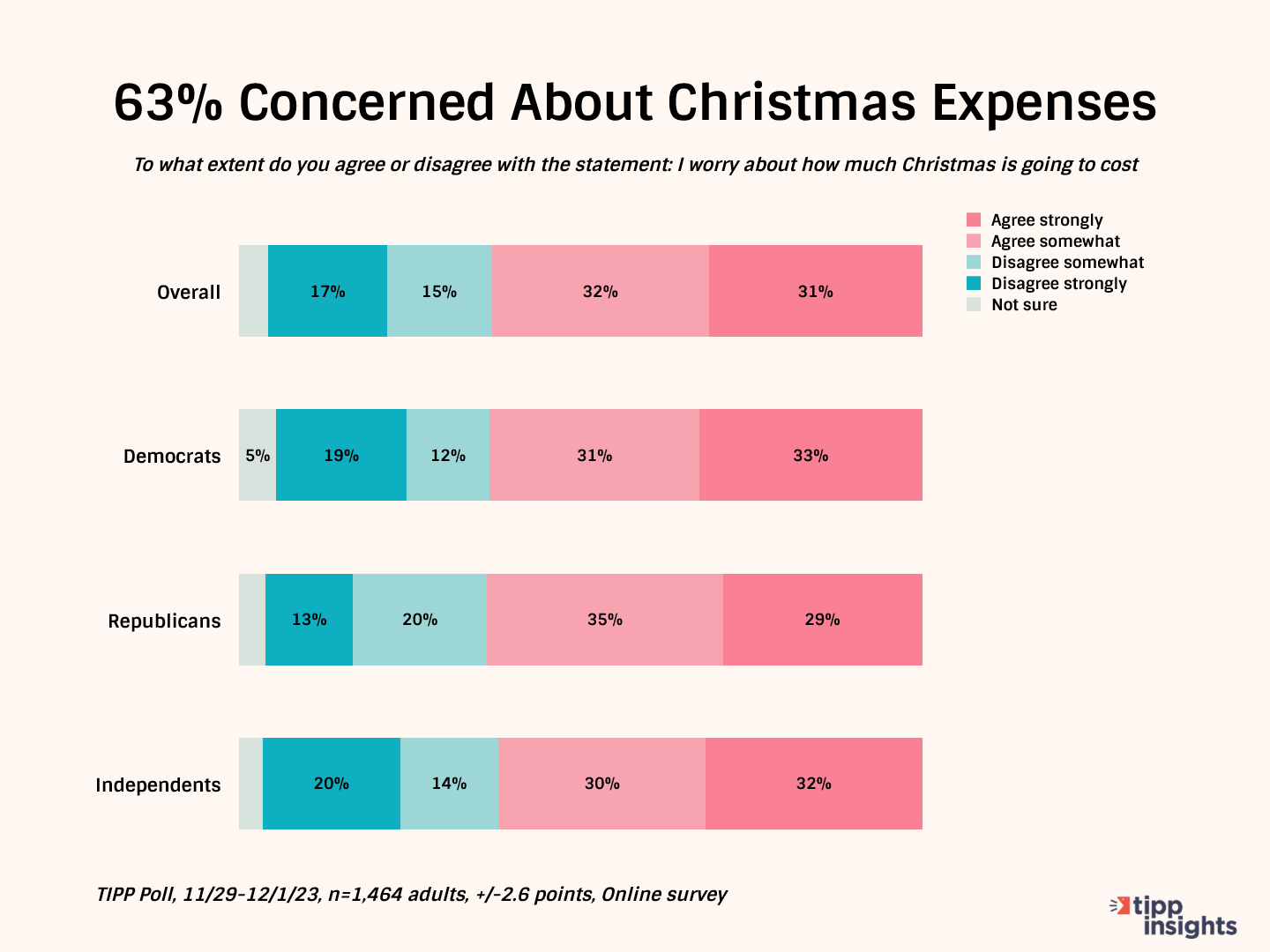
The worries are reflected in spending intentions. Compared to recent years, two people plan to spend less for every person who plans to spend more. Forty-two percent are likely to spend less, while only 20% will spend more.
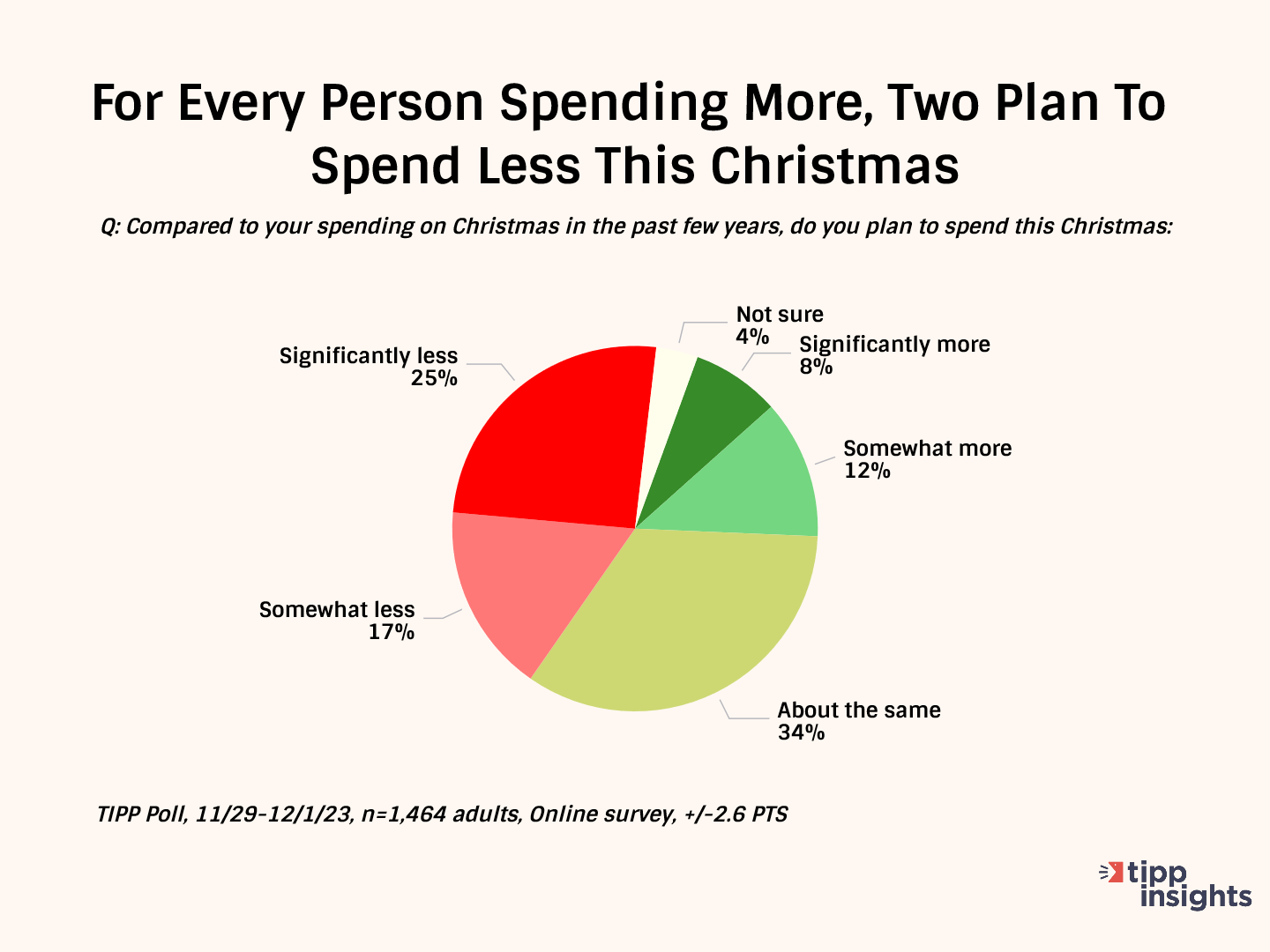
Inflation Direction
The chart below compares the 12-month average of monthly changes against the 6-month and the 3-month averages. We also show the reading for November 2023.
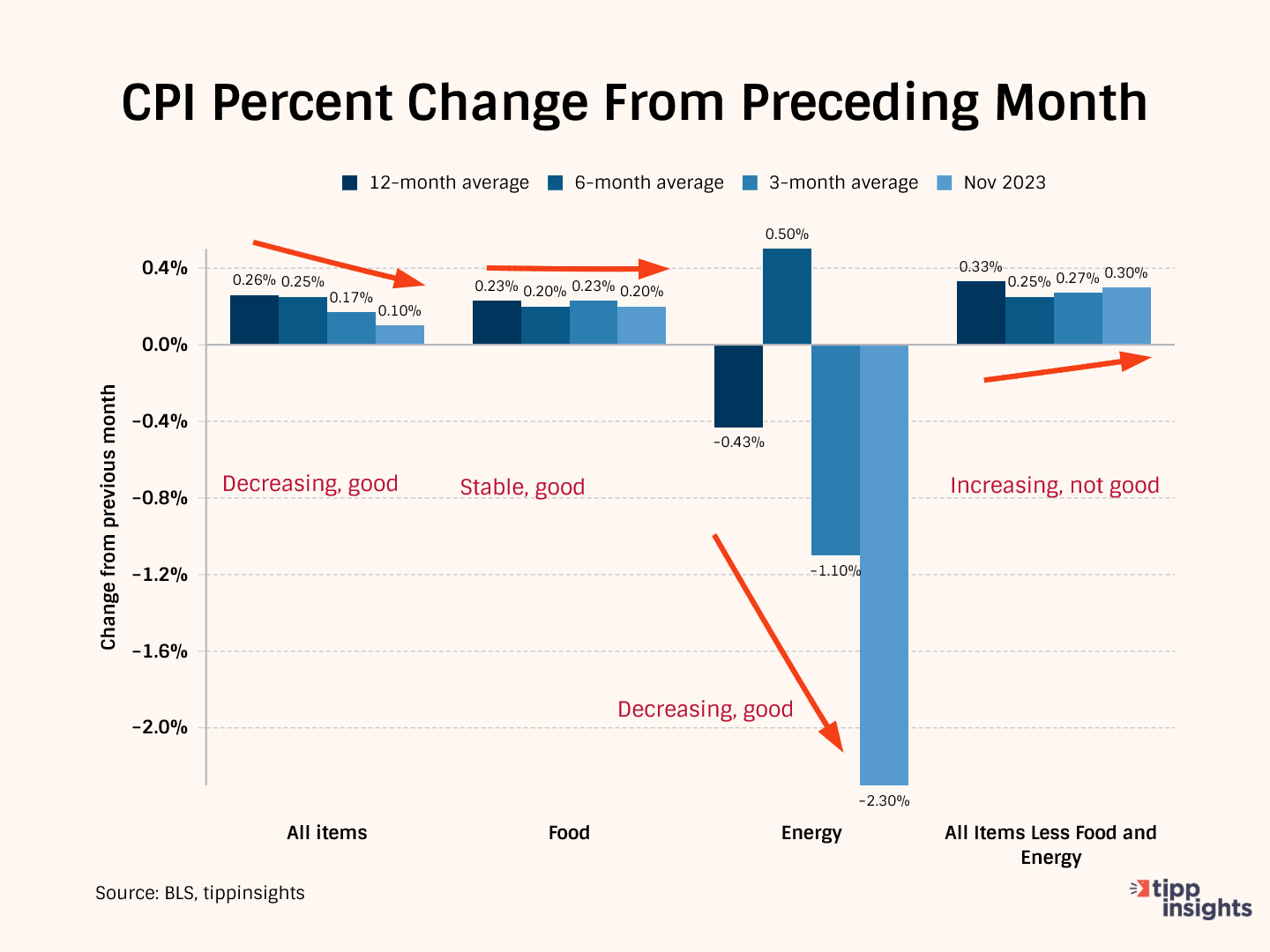
The 12-month average considers 12 data points and presents a long-term reference, while the six-month and three-month averages consider recent data points.
Typically, we compare the data from November 2023 to the three-month average to gain a clearer perspective. In November 2023, the price increase for All items was 0.10%, smaller than the three-month average of 0.17%. This shows a significant improvement in November.
Meanwhile, the three-month average of 0.17% is lower than the six-month average of 0.25%, indicating a recent slowdown in the rate of increase over the last three months.
Furthermore, the six-month average of 0.25% is lesser than the twelve-month average of 0.26%, an improvement in the trend over the last six months.
In conclusion, this pattern suggests that price increases have slowed down in November compared to the long term. The data displays a downward-pointed staircase, the ideal pattern we want to see for improvement.
In October, Food prices rose by 0.20%, lower than the 3-month average of 0.23%, similar to the 6-month average of 0.20%, and smaller than the 12-month average of 0.26%. The data is in a narrow band from 0.20% to 0.26%, displaying stability, which is encouraging.
Meanwhile, Energy prices decreased by 2.3%, less than the three-month moving average of 1.1%, indicating improvement. It also outperformed the 12-month average of -0.43% and the six-month average of 0.50%.
All items less food and energy, known as "core inflation," was 0.30%, higher than the three-month average of 0.27%, indicating deterioration for the month. Further, the three-month average of 0.27% is higher than the six-month average of 0.25%.
However, the six-month average of 0.25% is lower than the 12-month average of 0.33%, suggesting improvement. Though there has been improvement over the long term, there has been a recent deterioration.
In summary, except for core inflation, we see an overall improvement.
Monetary Policy
Since March 2022, the Fed has raised interest 11 consecutive times, bringing its benchmark interest rate to 5.25%, the highest level in 22 years.
The CPI report has given hope to many that the Fed is done with rate hikes. With core CPI above 4.0% and geopolitical tensions that could lead to volatility in the energy markets, we are unsure of what lies ahead. With core inflation entrenched at the current rates, we believe it won't be easy to bring CPI inflation down to the Fed's target of 2.0% without further rate increases. Furthermore, the Fed has to strike a delicate balance between election-year pressures and achieving its goals. A sluggish economy lies ahead in 2024.
To access the TIPP CPI readings each month, you can visit tippinsights.com. We'll publish the TIPP CPI and our analysis in the days following the Bureau of Labor Statistics (BLS) report. The upcoming release of TIPP CPI is on Jan. 12, 2024. We'll also post a spreadsheet in our store for download.
Hey, want to dig deeper? Download data from our store for a small fee!
Want to understand better? We recently wrote an explainer on inflation that sixth graders could understand. Everyone can benefit from it. Milton Friedman's Priceless Lessons On Inflation.
We could use your help. Support our independent journalism with your paid subscription to keep our mission going.


